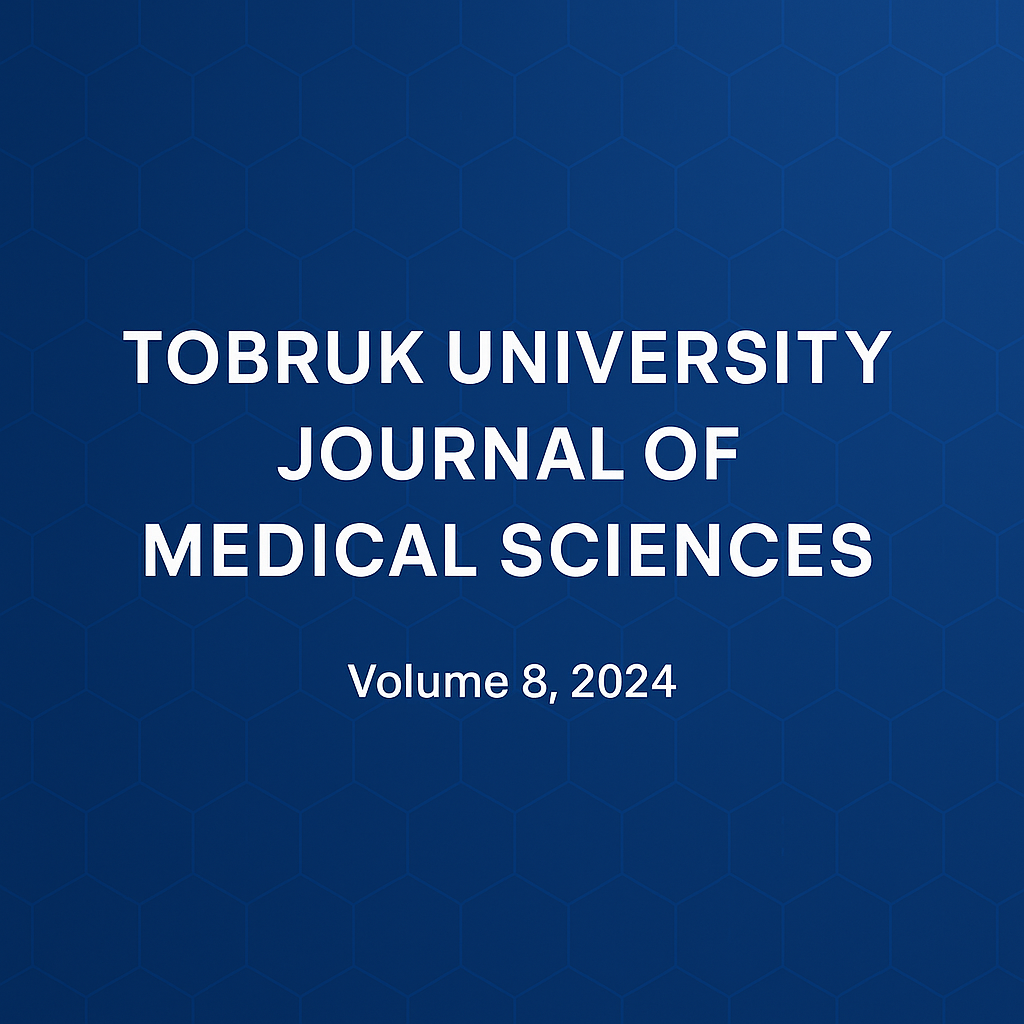Benefits and Risks of Green Tea in Libyan Meals and the Safe Method of Preparing it and Nutritive Advices.
DOI:
https://doi.org/10.64516/w1qs7r91Keywords:
Tannins, Caffeine, Libyan Green Tea, Healthy Method, Nutritive advicesAbstract
This effort clarifies the percentage of daily tannin and caffeine in Libyan green tea beverages. Also, it is to know the extent of Libyan's awareness of the healthy method of preparing green tea. As well as it is to know the nutritional and healthy benefits of green tea and nutritive advice. 12 samples of vert de chine of green tea were analyzed. 12 samples were divided into four groups. Each group contained three samples. The preparations include raw samples steeped in boiled water, samples heated for 5 minutes, samples heated for half an hour, and samples heated for an hour. The heating temperature was at 100C˚. A cross-sectional study was randomly achieved on 200 healthy Libyan people (100 men and 100 women) aged from 30 to 45 years old from 1 January to 31 March 2023 in Derna, Libya. The questionnaire was about the type of preparation method of green tea, boiling time, and their knowledge about the nutritional benefits and health risks of green tea beverages. The caffeine percentages were 1.6 %, 2.1 %, 2.5%, and 4.7%, respectively. Also, the highest tannin participation in green tea (heated for an hour) was 91 mg/100ml. This value is higher than the values in raw green tea steeped in boiled water and heated for 5 minutes, which were 0.109 mg/100 ml and 0.49 mg/100 ml, respectively. The heating time affects the proportion of caffeine and tannin in green tea drinks; as the heating time rises, the percentage of caffeine and tannin rises. There was a statistically significant difference between percentages of caffeine and tannin according to their heating times (P= 0.031). The proportion of tannin in green tea was higher than caffeine. The expansion of tannin percentage in green tea may lead to genetic faults and other problems. This indicates that raw green tea steeped in boiled water and boiled green tea for 5 minutes may nutritionally be regarded as the most excellent for improving human health because they provide the smallest percentages of caffeine and tannin in Libyan routinely prepared green tea drinks. However, no participant preferred to steep green tea in boiled water.
References
1. Amal A, Embarka E, and Fawzia A. 2021. Study on Percentage of Tannin and Caffeine in Libyan Green Tea Beverages and their Nutritional Effect on Human Health. TUJMS, 55 – 65. ISSN No: 27892093.
2. Berube-Parent S, Pelletier C, Dore J, Tremblay A. 2005. Effects of encapsulated green tea and guarana extracts containing a mixture of epigallocatechin-3-gallate and caffeine on 24-hour energy expenditure and fat oxidation in men. Br J Nutr. 94: 432-436.
3. Bhagwat S, Beecher R, Haytowitz B, Holden M, Dwyer J, Gebhardt E, Eldridge l, Agrawal S, Balentine A. 2021. Flavonoid composition of tea: Comparison of black and green teas, USDA Agricultural Research Service. Available from: http//en. Wikipedia.org/wiki/potential effects of tea on health. Accessed on: August 17, 2021.
4. Devine A, Hodgson M, Dick M, Prince L. 2007. Tea drinking is associated with benefits on bone density in older women. AM J Clin Nutr, 86 (4): 1243- 1247.
5. Farhoosh R, Golmovahhed G, Mohammad K. 2007. Antioxidant activity of various extracts of old tea leaves and black tea wastes (Camellia Sinensis L.). Food Chem, 100:231-236.
6. Florian P, Kroesen J, Zetz M, Froman M, .and Schulzke D. 2004. Cytokine-dependent transpcitonal down-regulation of epithelial sodium channel in ulcerative colitis. Gastroentrol., 126: 1711 - 1720.
7. Hirasawa M, Takada K. 2004. Multiple effects of green tea catechin on the antifungal activity of antimycotics against candida albicans. J Antimicrobial Chemother. 53: 225-229.
8. Jenna C. 2008. Caffeine content of brewed teas. J Anal Toxicol, 32: 702–704.
9. Jeu-Ming Y, Jun Y, Hui-Hsueh C, ji-Yuan L. 2015. Effects of temperature and water steeping duration on antioxidant activity and caffeine content of tea, J Food Sci, 7: e3.
10. Katiyar S, Elmets A, Katiyar K. 2007. Green tea and skin cancer: photo immunology, angiogenesis, and DNA repair. J Nutr Biochem, 18: 287-296.
11. Newman J. 2021. Cooking with green tea. Food Guides. Available from: http://www.secretsofgreentea.com/green-tea-diet-review. Accessed on Sep 18, 2021.
12. Pasrij D, Anandhamakrishnan C. 2015. Techniques for Extraction of green tea polyphenols: A review. Food Bioprocess. Technol., 8: 935-950.
13. Rietveld A, Wiseman S. 2003. Antioxidant effects of tea: evidence from human clinical trials. J Nutr, 133: 3285S-3292S.
14. Sinija R , Mishra N. 2008. Green tea: Health benefits. J Nutri Environ Med., 17: 232-242.
15. Wolfram S, Wang Y, Thielecke F. 2006. Anti-obesity effects of green tea: from bedside to bench. Mol Nutr Food Res, 50: 176 – 87.












